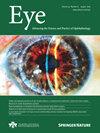Deep learning model for automatic detection of different types of microaneurysms in diabetic retinopathy
IF 2.8
3区 医学
Q1 OPHTHALMOLOGY
引用次数: 0
Abstract
This study aims to develop a deep-learning-based software capable of detecting and differentiating microaneurysms (MAs) as hyporeflective or hyperreflective on structural optical coherence tomography (OCT) images in patients with non-proliferative diabetic retinopathy (NPDR). A retrospective cohort of 249 patients (498 eyes) diagnosed with NPDR was analysed. Structural OCT scans were obtained using the Heidelberg Spectralis HRA + OCT device. Manual segmentation of MAs was performed by five masked readers, with an expert grader ensuring consistent labeling. Two deep learning models, YOLO (You Only Look Once) and DETR (DEtection TRansformer), were trained using the annotated OCT images. Detection and classification performance were evaluated using the area under the receiver operating characteristic (ROC) curves. The YOLO model performed poorly with an AUC of 0.35 for overall MA detection, with AUCs of 0.33 and 0.24 for hyperreflective and hyporeflective MAs, respectively. The DETR model had an AUC of 0.86 for overall MA detection, but AUCs of 0.71 and 0.84 for hyperreflective and hyporeflective MAs, respectively. Post-hoc review revealed that discrepancies between automated and manual grading were often due to the automated method’s selection of normal retinal vessels. The choice of deep learning model is critical to achieving accuracy in detecting and classifying MAs in structural OCT images. An automated approach may assist clinicians in the early detection and monitoring of diabetic retinopathy, potentially improving patient outcomes.

糖尿病视网膜病变不同类型微动脉瘤自动检测的深度学习模型。
目的:本研究旨在开发一种基于深度学习的软件,能够在非增殖性糖尿病视网膜病变(NPDR)患者的结构光学相干断层扫描(OCT)图像上检测和区分微动脉瘤(MAs)为低反射或高反射。方法:对249例确诊为NPDR的患者(498只眼)进行回顾性分析。使用Heidelberg Spectralis HRA + OCT设备获得结构OCT扫描。MAs的手动分割由五个屏蔽阅读器执行,专家评分确保一致的标记。使用带注释的OCT图像训练两个深度学习模型YOLO (You Only Look Once)和DETR (DEtection TRansformer)。采用受试者工作特征(ROC)曲线下面积评价检测和分类效果。结果:YOLO模型在整体MA检测上表现不佳,AUC为0.35,在高反射MA和低反射MA检测上AUC分别为0.33和0.24。DETR模型对整体MA检测的AUC为0.86,而对高反射MA和低反射MA的AUC分别为0.71和0.84。事后审查显示,自动和手动分级之间的差异往往是由于自动方法的选择正常视网膜血管。结论:深度学习模型的选择是实现结构OCT图像MAs检测和分类准确性的关键。一种自动化的方法可以帮助临床医生早期发现和监测糖尿病视网膜病变,潜在地改善患者的预后。
本文章由计算机程序翻译,如有差异,请以英文原文为准。
求助全文
约1分钟内获得全文
求助全文
来源期刊

Eye
医学-眼科学
CiteScore
6.40
自引率
5.10%
发文量
481
审稿时长
3-6 weeks
期刊介绍:
Eye seeks to provide the international practising ophthalmologist with high quality articles, of academic rigour, on the latest global clinical and laboratory based research. Its core aim is to advance the science and practice of ophthalmology with the latest clinical- and scientific-based research. Whilst principally aimed at the practising clinician, the journal contains material of interest to a wider readership including optometrists, orthoptists, other health care professionals and research workers in all aspects of the field of visual science worldwide. Eye is the official journal of The Royal College of Ophthalmologists.
Eye encourages the submission of original articles covering all aspects of ophthalmology including: external eye disease; oculo-plastic surgery; orbital and lacrimal disease; ocular surface and corneal disorders; paediatric ophthalmology and strabismus; glaucoma; medical and surgical retina; neuro-ophthalmology; cataract and refractive surgery; ocular oncology; ophthalmic pathology; ophthalmic genetics.
 求助内容:
求助内容: 应助结果提醒方式:
应助结果提醒方式:


